Religion: Religious Leaders Pre-1900
Hildegard of Bingen (circa 1098-1179)

Religion and Branch: Christianity (Catholicism)
Title: Abbess, Mystic, Composer, Doctor of the Church
Hildegard of Bingen was a multifaceted and remarkable figure in medieval Germany, renowned for her contributions as a theologian, mystic, composer, and polymath. From a young age, she experienced mystical visions.
At the age of 42, Hildegard believed she was instructed by God to write down these visions, which became the foundation for much of her theological work. She authored several theological, botanical, and medicinal texts. Her most famous theological works include Know the Ways, Book of Life's Merits, and Book of Divine Works. These works describe her visions and explore the nature of God, humanity, and the cosmos.
Hildegard was the abbess of the monastic communities at both Disibodenberg and later Rupertsberg, where she demonstrated strong leadership and administrative capabilities. She was instrumental in the growth and influence of these communities.
Hildegard is also remembered for her compositions of sacred music. Her liturgical songs, which were deeply intertwined with her spiritual insights, are among the earliest known compositions by a named author in the Western musical tradition.
Hildegard was an active correspondent, engaging in written exchanges with popes, emperors, bishops, and other significant figures of her time. Her letters provide insight into her spiritual counsel, her views on religious reform, and her interactions with the broader medieval world.
Hildegard had a keen interest in the natural world. She wrote about plants, animals, and minerals in her work Physica and about the human body and its health in Causes and Concerns. These works showcase her observations and remedies, combining both spiritual and practical insights.
Hildegard of Bingen stands as one of the most influential female figures of the Middle Ages. Her wide-ranging contributions, from theology to music and natural science, combined with her visionary experiences, have cemented her legacy as a pioneering and profound voice in medieval German religion and culture. She was canonized a saint by the Roman Catholic Church in 2012 and was also named a Doctor of the Church, reflecting her significant contributions to Christian theology and spirituality.
Isaac ben Samuel (circa 1115 to circa 1184)
Religion and Branch: Judaism
Title: Rabbi, Talmudic Scholar, Tosafist
Isaac ben Samuel, often referred to as the Ri (an abbreviation derived from Rabbi Isaac), was a prominent French Talmudist and one of the leading Tosafists of his time. Tosafists were medieval Talmudic scholars in France and Germany who are particularly known for their tosafot—critical and explanatory glosses on the Talmud, which add to the commentary of Rashi, a major medieval commentator on the Talmud.
Samuel was a student of the esteemed Talmudic scholar, Rabbi Tam (Jacob ben Meir), who was a grandson of Rashi. He was also influenced by other leading Jewish scholars of the time.
The Tosafists' work, including that of Samuel, is characterized by an analytical approach to Talmudic study, often addressing apparent contradictions in the text and resolving them through various means. Samuel's contributions to the tosafot are found in many tractates of the Talmud, reflecting his keen analytical mind and deep scholarship.
Samuel was not only a scholar but also a leader in the Jewish community. He headed yeshivot (Talmudic academies) in Dampierre, a major center of Jewish learning in France during the medieval period. Through his leadership roles, he helped shape the direction of Jewish thought and practice in Ashkenazi communities.
Apart from his work on the tosafot, Samuel issued numerous halachic (Jewish legal) decisions, many of which have been incorporated into the standard codes of Jewish law. His rulings often reflect a balance between strict interpretation of the law and sensitivity to practical concerns and the realities of Jewish communal life.
Samuel's contributions to Talmudic scholarship and Jewish law have left an enduring impact. His teachings, as well as those of other Tosafists, have been studied by generations of Talmudic scholars and continue to be integral to advanced Talmudic study today.
Samuel was a central figure in Ashkenazi Jewish scholarship during the Middle Ages. His contributions as a Tosafist and as a halachic authority solidified his reputation as one of the great Jewish scholars of his era, and his work continues to influence Jewish thought and practice.
Baruch ben Isaac (circa 1140-1212)
Religion and Branch: Judaism
Title: Rabbi, Scholar
Baruch ben Isaac is best known in the context of Ashkenazi Judaism as a medieval rabbi and scholar from the region of what is now Germany. His most renowned work is his Book of the Heave Offering, which is a significant halakhic (Jewish legal) work.
Book of the Heave Offering is divided into sections and covers various topics related to Jewish law. Isaac addresses several ritual practices, laws of Sabbath and festivals, dietary laws, and more. The book is known for its systematic organization and is notable for citing and reconciling various earlier sources. In addition to his major work, he wrote responsa and provided commentary on various Talmudic topics, further establishing his position as a leading scholar of his time.
Rabbi Isaac was an important figure in the medieval Ashkenazi rabbinic tradition. The Ashkenazim, primarily Jews of France and Germany during this period, had a distinct set of customs, liturgical practices, and halakhic interpretations. His writings influenced later Ashkenazi rabbis and halakhic decisions. His ability to harmonize various opinions and provide clear rulings was particularly valued.
Isaac lived during a dynamic period of Jewish scholarship in Ashkenaz. This era witnessed the rise of Tosafists, who were medieval Talmudic scholars from France and Germany known for their critical discussions and additions (Tosafot) to Rashi's commentary on the Talmud. Though it's not clear if Isaac was directly linked to the Tosafist school, he lived in an environment of intense Talmudic scholarship.
Rabbi Isaac's contributions to the realm of Ashkenazi halakhic literature have left a lasting legacy. His works continue to be studied and are referenced in later halakhic discussions.
Albertus Magnus (circa 1200-1280)
Religion and Branch: Christianity (Catholicism)
Title: Saint, Friar, Bishop, Educator, Writer
Albertus Magnus, also known as Saint Albert the Great and Albert of Cologne, was a German Dominican friar and bishop who made significant contributions to both theology and science during the Middle Ages. He joined the Dominican Order in his youth and was an influential figure within it. He took on various roles, including teaching and administrative duties.
One of Albertus's most notable contributions was his integration of Aristotelian philosophy with Christian theology. He was among the first to study Aristotle's works comprehensively and sought to reconcile Aristotelianism with Christian doctrine.
Magnus taught at the University of Paris, one of the premier educational institutions of the time. It was here that he had Thomas Aquinas, another towering figure of medieval scholasticism, as one of his students.
Magnus was a prolific writer. His works spanned a wide range of topics from theology and philosophy to natural sciences. His comprehensive approach to knowledge was evident in his writings on botany, zoology, astronomy, alchemy, and mineralogy, among other subjects.
Magnus was appointed as the bishop of Regensburg (Ratisbon) in 1260. However, his tenure was short-lived, as he resigned after three years to return to his academic pursuits and teaching.
Recognized for his profound intellect and comprehensive approach to both faith and reason, Magnus's influence was felt not just in religious circles but also in the broader realm of European intellectual history. His works set the stage for the subsequent development of scholasticism, particularly through the teachings of his student, Thomas Aquinas.
Magnus was canonized a saint by the Roman Catholic Church in 1931. In the same year, he was declared a Doctor of the Church, a title given to saints recognized for their significant contributions to theology or doctrine.
Magnus stands as one of the preeminent figures of medieval European thought. His endeavors to harmonize faith with reason, and his expansive intellectual pursuits, have solidified his place as a key figure in the history of both religion and science in Germany and beyond.
Meister Eckhart (circa 1260 to circa 1328)
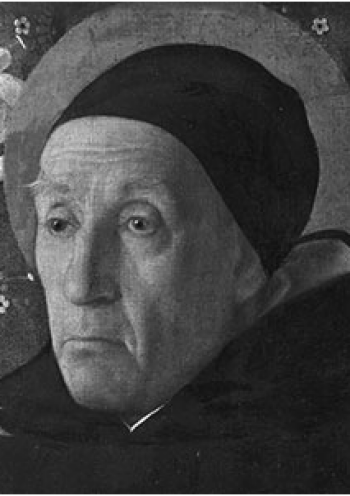
Religion and Branch: Christianity (Catholicism)
Title: Theologian, Philosopher, Mystic
Meister Eckhart was a German theologian, philosopher, and mystic whose profound and innovative teachings had a significant impact on Christian spirituality, both in his time and in subsequent centuries.
Eckhart joined the Dominican Order early in his life and received an extensive education in theology and philosophy. He held various positions within the order, including professorships and administrative roles.
Eckhart is best known for his mystical teachings which delve into the nature of God and the soul's union with the Divine. He emphasized the idea of the "Godhead," an abstract and impersonal aspect of God, and the soul's potential to experience direct communion with this Divine essence.
Eckhart's sermons and treatises were primarily in Middle High German, making them more accessible to the laity than the typical Latin works of his time. In these texts, he often employed paradoxical and nuanced language to convey his mystical insights.
Eckhart's novel approaches to theology, especially his use of negative theology (speaking about God in terms of what He is not) and certain statements that seemed to blur the distinction between the soul and God, led to accusations of heresy. Towards the end of his life, some of his propositions were formally condemned by the papal bull In Agro Dominico in 1329, though it's debated whether Eckhart himself was personally condemned.
While he faced ecclesiastical challenges during his lifetime, Meister Eckhart's influence grew posthumously. His teachings influenced subsequent Christian mystics, like Johannes Tauler and Heinrich Suso, and played a foundational role in the German mystical movement known as the "Rhineland mysticism." In modern times, his works have seen a revival of interest not only among Christian theologians but also among those interested in spirituality beyond traditional religious boundaries.
Eckhart stands as one of medieval Germany's most profound and original thinkers. His exploration of the soul's relationship with the Divine and his unique expression of these insights have left an indelible mark on the history of Christian mysticism and theology.
Martin Luther (1483-1546)
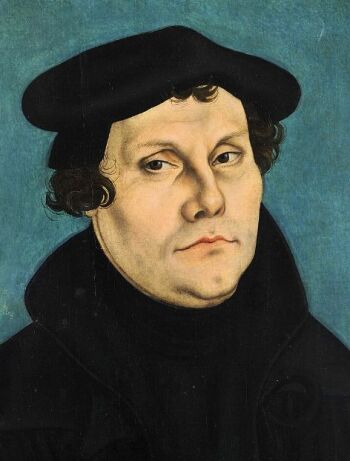
Religion and Branch: Protestant Christianity (Lutheran)
Title: Priest, Theologian, Writer
Martin Luther is one of the most transformative figures in Western religious history, known primarily for his role in initiating the Protestant Reformation.
Luther's challenges to the Roman Catholic Church began with his "Ninety-Five Theses," a list of arguments against the church's sale of indulgences. He reportedly nailed this document to the door of the Castle Church in Wittenberg, sparking widespread debate.
Luther's theological views, especially his emphasis on the Bible as the sole source of religious authority and his belief in justification by faith alone, put him in direct conflict with the Roman Catholic Church. He rejected the absolute authority of the Pope and the church hierarchy. In 1521, after refusing to recant his views at the Diet of Worms, he was excommunicated from the Catholic Church and declared an outlaw by Emperor Charles V.
In 1522, Luther completed his translation of the New Testament into German, making the scriptures more accessible to the common people. This act not only had religious implications but also played a vital role in shaping the modern German language.
Luther emphasized congregational participation in worship. He introduced vernacular hymns and liturgy, and he himself composed several hymns, the most famous being "A Mighty Fortress Is Our God."
Luther's teachings laid the foundation for the Lutheran Church, which became the state religion in various parts of Germany. His emphasis on a personal relationship with God and scripture over church tradition had a profound impact on Christianity.
Luther's Reformation led to significant upheavals in Europe, both religious and political. The Peace of Augsburg (1555) allowed German princes to choose between Catholicism and Lutheranism for their territories, leading to a religious patchwork in the Holy Roman Empire.
Beyond establishing Lutheranism, Luther's challenge to the Catholic Church catalyzed a series of reform movements across Europe, leading to the splintering of the Western Church and the rise of various Protestant denominations. His religious convictions, writings, and actions directly challenged the dominant religious structures of his time, leading to profound theological, cultural, and political changes in Germany and throughout Europe.
Melchior Hoffman (circa 1495 to circa 1543)
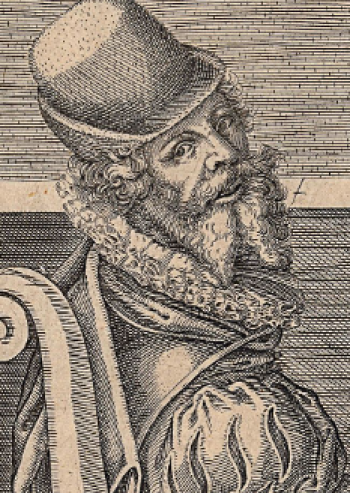
Religion and Branch: Protestant Christianity (Lutheran)
Title: Lay Preacher, Reformer
Melchior Hoffman was a significant figure during the Reformation, particularly in relation to the development of Anabaptist movements in northern Europe. Originally a furrier by trade, he converted to Lutheranism in the 1520s and quickly became an itinerant preacher and apocalyptic prophet, spreading his religious views across Europe.
While influenced by Lutheranism, Hoffman's beliefs diverged in several key areas. He came to reject infant baptism, advocating instead for believer's baptism (adult baptism upon confession of faith). This placed him in the Anabaptist tradition.
Hoffman was deeply apocalyptic, believing in the imminent return of Christ. He predicted that the New Jerusalem would descend in Strasbourg in 1533, which led him to that city. When his prophecy didn't materialize, he was imprisoned, where he would spend the remainder of his life.
Though he personally didn't establish a lasting church or sect, Hoffman's teachings deeply influenced the Anabaptist movement, especially in the Netherlands and northern Germany. His disciples and followers would play significant roles in subsequent Anabaptist movements, most notably in the Münster Rebellion of 1534-1535, where Anabaptists took over the city of Münster, believing it to be the New Jerusalem.
Hoffman was a prolific writer, and his works played a significant role in spreading and solidifying Anabaptist ideas. Even after his imprisonment, his writings continued to inspire and guide various Anabaptist groups.
Hoffman was a central figure in the early days of the Anabaptist movement in northern Europe. While he personally didn't establish a lasting religious group, his teachings, writings, and the movements he inspired left an indelible mark on the religious landscape of Germany and the surrounding regions.
Jakob Böhme (1575-1624)
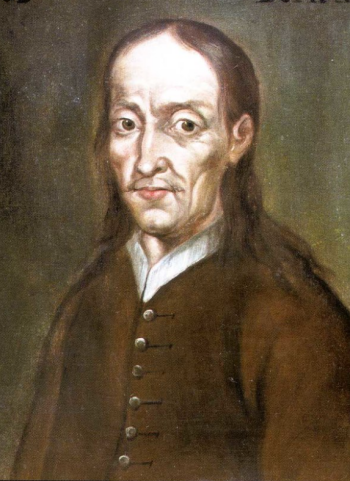
Religion and Branch: Protestant Christianity (Lutheran)
Title: Philosopher, Theologian, Mystic
Jakob Böhme was a German mystic and theologian whose deeply spiritual writings left a significant mark on Protestant thought and various esoteric traditions.
Originally a shoemaker by trade, Böhme experienced a series of mystical visions that profoundly influenced his life and writings. He claimed that in these visions he came to understand the mysteries of creation, redemption, and the relationship between God and humanity.
Unlike systematic theologians, Böhme's writings are characterized by their deep mystical and symbolic nature. He delved into topics such as the nature of God, the origin of evil, and the process of individual redemption. His work described a dialectical process in the universe, with opposing forces of light and darkness, and he often used alchemical terminology to convey his insights.
Some of Böhme's most influential works include Aurora (his first major treatise), The Three Principles of the Divine Essence, and The Incarnation of Jesus Christ. These writings are replete with intricate symbolism and complex theosophical concepts.
Böhme's writings, especially his emphasis on direct personal experience of the Divine and his unconventional theological views, were controversial. His works were viewed with suspicion by both the Lutheran Church authorities and the local government, leading to temporary bans on his writing.
While controversial in his time, Böhme's ideas gained traction in subsequent centuries. His writings influenced a wide range of thinkers and movements, including German Romantic philosophers, the Pietist movement, various esoteric traditions, and even prominent figures such as Isaac Newton and William Blake.
Böhme's thought influenced Protestant theologians and played a role in shaping German mysticism and Pietism. His influence also spread beyond Germany, impacting religious and philosophical thought in England, Russia, and other parts of Europe.
Böhme was a self-taught mystic and theologian whose unconventional and profound insights into the nature of God, humanity, and the cosmos left a lasting impact on religious thought in Germany and beyond. His works, characterized by their depth and symbolism, have continued to inspire and challenge readers for centuries.
Moses Mendelssohn (1729-1786)
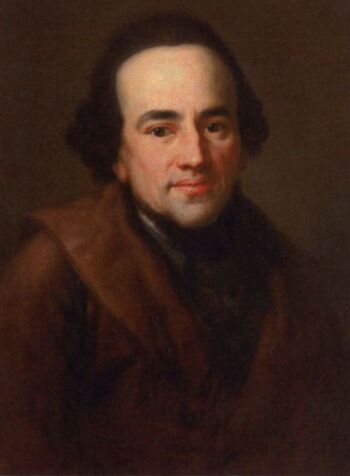
Religion and Branch: Judaism
Title: Philosopher, Theologian
Moses Mendelssohn was a pivotal figure in the Jewish Enlightenment and played a fundamental role in the intellectual and religious evolution of the Jewish community in 18th-century Germany.
Mendelssohn is often called the "German Socrates" because of his efforts to reconcile Enlightenment values with religious faith. He believed that reason and faith were not mutually exclusive and worked to harmonize them, especially within the Jewish tradition.
Mendelssohn argued for the civil rights and emancipation of Jews in Germany, urging them to learn the German language and engage with German culture, all while maintaining their religious identity. His efforts laid the groundwork for the broader integration of Jews into German society.
In response to challenges from Christian theologians, Mendelssohn wrote in defense of Judaism, refuting claims of its inferiority to Christianity. His "Jerusalem, or On Religious Power and Judaism" (1783) was particularly influential. In this work, he championed the idea of the separation of church and state and defended Judaism as a religion of reason.
To help German Jews integrate culturally while retaining their religious identity, Mendelssohn undertook a monumental project to translate the Hebrew Bible (Torah) into German. This translation, rendered in Hebrew script, was accompanied by a commentary and was designed to be read in synagogues. It greatly aided the German-Jewish community in understanding their religious texts in the vernacular.
Mendelssohn's thought served as a foundation for the Reform Judaism movement, which sought to modernize Jewish practices and beliefs in line with contemporary values. However, while some embraced his ideas, others in the more Orthodox Jewish community were wary of his emphasis on assimilation and his approach to Jewish tradition.
Mendelssohn was a central figure in the German Enlightenment and Jewish intellectual history. Through his writings, translations, and advocacy, he sought to carve a path for Jews to be both enlightened European citizens and faithful adherents of their religious tradition.
Ignaz von Döllinger (1799-1890)
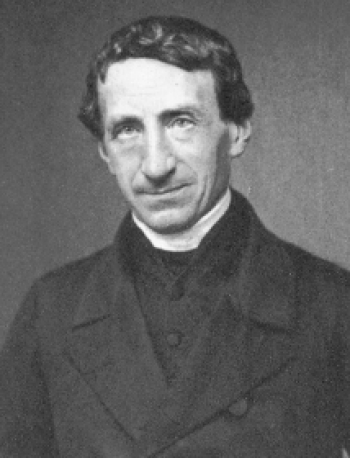
Religion and Branch: Christianity (Catholicism)
Title: Priest, Theologian, Historian
Ignaz von Döllinger was a prominent German theologian and church historian whose views and actions during the 19th century had a significant impact on the religious debates of his time, particularly within the Roman Catholic Church. A respected professor of church history and canon law in Munich, he was renowned for his extensive scholarship and writings on the early Christian church and the Middle Ages.
Döllinger is perhaps best known for his strong opposition to the dogma of papal infallibility, which was defined by the First Vatican Council in 1870. He argued that this dogma was not supported by the historical evidence from the early church. Due to his refusal to accept the newly defined doctrine of papal infallibility, he was excommunicated from the Roman Catholic Church in 1871.
After his excommunication, Döllinger became a leading figure in the Old Catholic movement in Germany. This movement consisted of Catholics who rejected the First Vatican Council's definitions. They sought to establish a form of Catholicism that was in line with their understanding of the early church and medieval traditions, without the centralizing features introduced in the 19th century.
Döllinger was deeply committed to the cause of Christian unity. He was involved in ecumenical dialogues, especially with the Anglican Church, and was a significant advocate for closer relations between the various Christian denominations.
Although the Old Catholic Church did not become a major religious force in Germany, Döllinger's scholarship, writings, and stance on church issues had a lasting influence on theological debates and ecumenical efforts.
Döllinger was a pivotal figure in 19th-century German Catholicism, known for his scholarly contributions, his opposition to papal infallibility, and his subsequent role in the Old Catholic movement. His life and work reflect the tensions and transformations within the Catholic Church during a period of significant change.
Copyright © 1993—2025 World Trade Press. All rights reserved.

 Germany
Germany